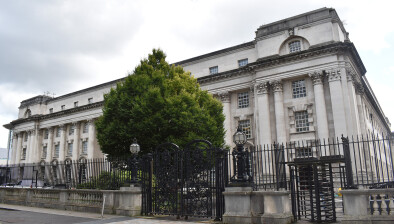NI: NI: Ulster Unionist Party politician awarded £48,750 for defamatory tweet by Sinn Féin politician
The Member of Parliament for Fermanagh and South Tyrone has been awarded £48,750.00 after a Sinn Féin politician posted a defamatory statement about him on Twitter in May 2014.

About this case:
- Judgment:
Philip Flanagan, a Sinn Féin MLA, published a tweet about Thomas Elliot MP, a member of the Ulster Unionist Party.
The tweet appeared on 1 May 2014, and stated “Tom Elliot talks to @StephenNolan about the past. I wonder if he will reveal how many people he harassed or shot as a member of the UDR.”
The tweet referred to Mr Elliot’s time as a member serving in the Ulster Defence Regiment between 1992 and 1999.
The plaintiff gave evidence, which was accepted by the judge, that he had an entirely clear disciplinary record in relation to his time with the UDR.
The defendant did not give evidence but in an affidavit sworn on 22 October 2015 stated that Twitter provides a service which is known as “Twitter Analytics” which measures the engagement of individual tweets. It revealed that the tweet was seen by 167 of his followers on Twitter and that 6 of those 167 retweeted the original tweet. One of those 167 “favourited” the tweet.
The plaintiff was made aware of the tweet from a number of sources, but there was no evidence that anyone who contacted him believed that the defamatory statement was true.
However, the judge accepted that there were other people to whom this statement was published who would have considered that it was true and would have thought the worse of the plaintiff and in doing so would have relied on the responsible position and standing of the defendant assuming that he would not have published such allegations unless he was sure that they were true and that he had information from which he knew that they were true.
The plaintiff reported feeling astonished, shocked, disappointed and frustrated, and fearing for his safety.
The plaintiff’s solicitors wrote to Mr Flanagan, identifying the statement as defamatory and demanding an apology and payment of damages.
This was initially ignored, leading to the plaintiff issuing proceedings in June. At this point the defendant’s solicitors contacted the plaintiff, eventually leading to a qualified offer of amends being made in September.
This led to the parties agreeing to the meaning of a defamatory statement, agreeing that the defendant would publish an apology on twitter, and that damages should be agreed.
However, the defendant did not offer an apology, did not respond to queries contained within the plaintiff’s response to his offer and did not make any proposal as to damages.
The plaintiff moved to enforce the offer of amends, which came on for hearing on 8 January 2016.
At that time, an apology was posted on twitter, the plaintiff read a statement in open court reading out the apology and the hearing proceeded on the basis of the one outstanding issue: the amount of compensation.
Stephens J outlined the law contained in the Defamation Act 1996, noting that damages are at large in the sense that they cannot be assessed by reference to any mechanical, arithmetical or objective formula (see Broome v Cassell & Co Ltd AC 1027 at 1071).
The checklist contained within Jones v Pollard EWCA Civ 1186was cited, as allowing the court to consider:
“1. The objective features of the libel itself, such as its gravity, its prominence, the circulation of the medium in which it was published, and any repetition.
2. The subjective effect on the plaintiff’s feelings (usually categorised as aggravating features) not only from the publication itself, but also from the defendant’s conduct thereafter both up to and including the trial itself.
3. Matters tending to mitigate damages, such as the publication of an apology.
4. Matters tending to reduce damages, e.g. evidence of the plaintiff’s bad reputation, or evidence given at the trial which the jury are entitled to take into account in accordance with the decision of this court in Pamplin v Express Newspapers Ltd 1 W.L.R. 116.
5. Special damages.
6. Vindication of the plaintiff’s reputation past and future.”
The Judge decided to first assess the damages, then consider any mitigating factors. It was taken into account the levels of reduction applied in England and Wales of between 30% and 50% in cases such as Nail v Newsgroup Newspapers Ltd EWCA Civ 1708,Campbell-James v Guardian Newspapers Ltd EWHC 893, Veliu v Mazrekaj EWHC 1710, Turner v Newsgroup Newspapers Ltd EWHC 892 and KC v MGN Ltd EWCA Civ 3.
It was noted that a disproportionate award of damages could constitute a violation of the article 10 ECHR right to freedom of expression (O’Rawe v William Trimble Ltd NIQB 135).
The Judge took into account awards which have been approved by the Court of Appeal or which have been made by the Court of Appeal in the exercise of its powers to make its own awards in cases in which that of the jury has been disallowed on appeal, as well as reasoned awards made by first instance judges sitting without a jury, see Gur v Avrupa Newspaper Ltd EWCA Civ 594.
It was also noted that the purpose of compensation in personal injury cases and in defamation cases is different and that is why it is not possible to equiparate personal injury and defamation damages, except as a check on the reasonableness of a proposed award of damages for defamation.
In Northern Ireland that check should be with personal injury awards in Northern Ireland, as noted in O’Rawe v William Trimble Limited NIQB 135.
Thus, the Judge assessed damages in accordance with the principles applicable to defamation and sought to maintain that sense of proportion with personal injury awards in Northern Ireland.
Looking at the specific case, the Judge noted the extremely serious nature of the defamation, the plaintiff’s feelings of disappointment and frustration, the fact that while it was a grave libel, it had less effect on the plaintiff than it might have on someone who has not used to “the heat of political debate”, the fact that the defendant had ignored the plaintiff and his failure to publish an apology until the date of the hearing, and his failure to make an offer of compensation.
Turning to vindication, the Judge found that: “In part the plaintiff’s reputation is vindicated by the apology which has now been published but there should also be a part of the award sufficient to convince a bystander of the baselessness of the charge.”
Finally, the Judge considered mitigation “which is substantial given the defendant’s apology and his use of the offer of amends procedure. The elements in mitigation of damages would have led to a reduction in the award of fifty percent if the response had been in an appropriate timescale, if the defendant had actually published the apology and if he had offered a realistic amount in compensation.”
As it was, the Judge reduced the level by 35 per cent. The initial award being £75,000.00, this was reduced to £48,750.00.








